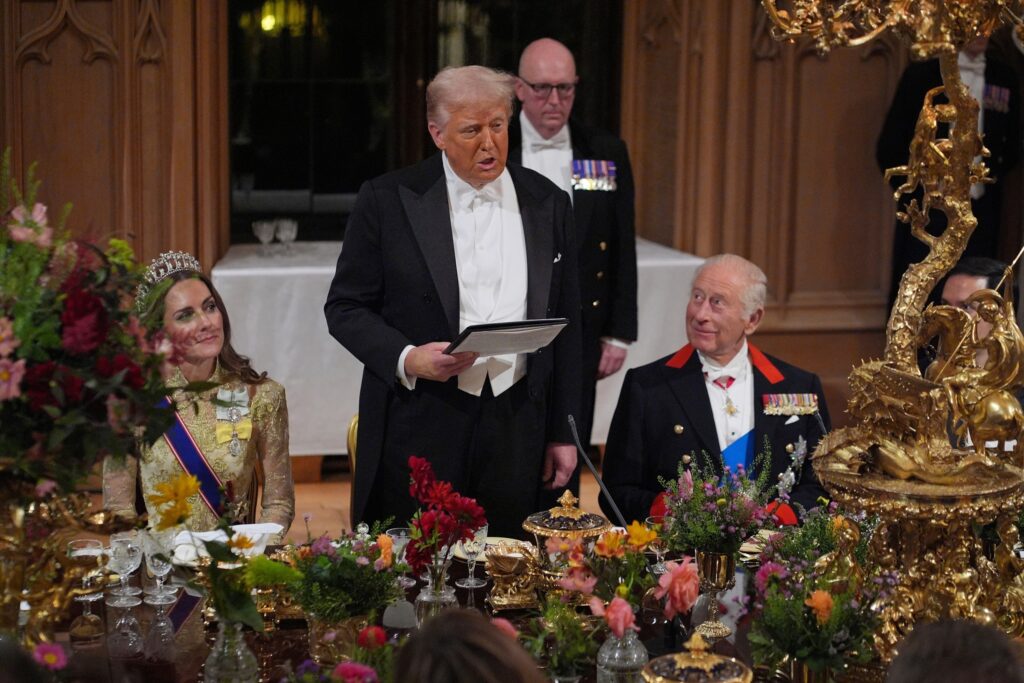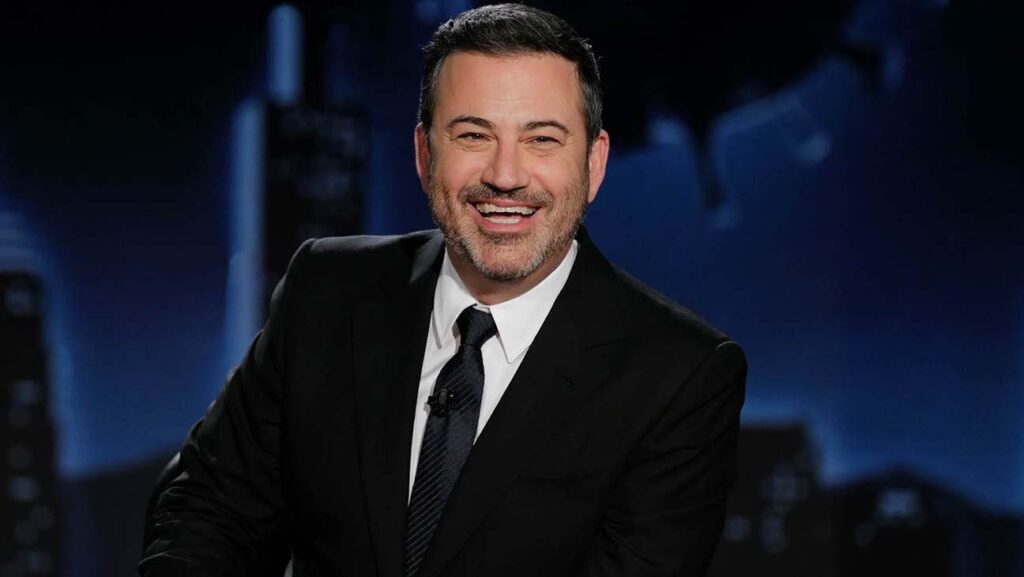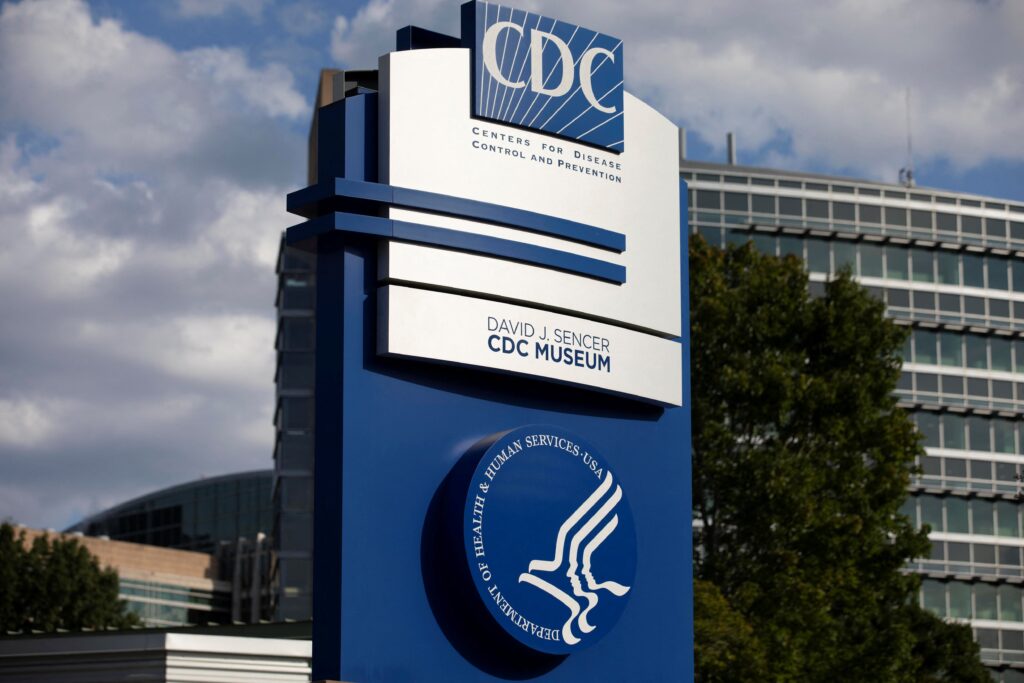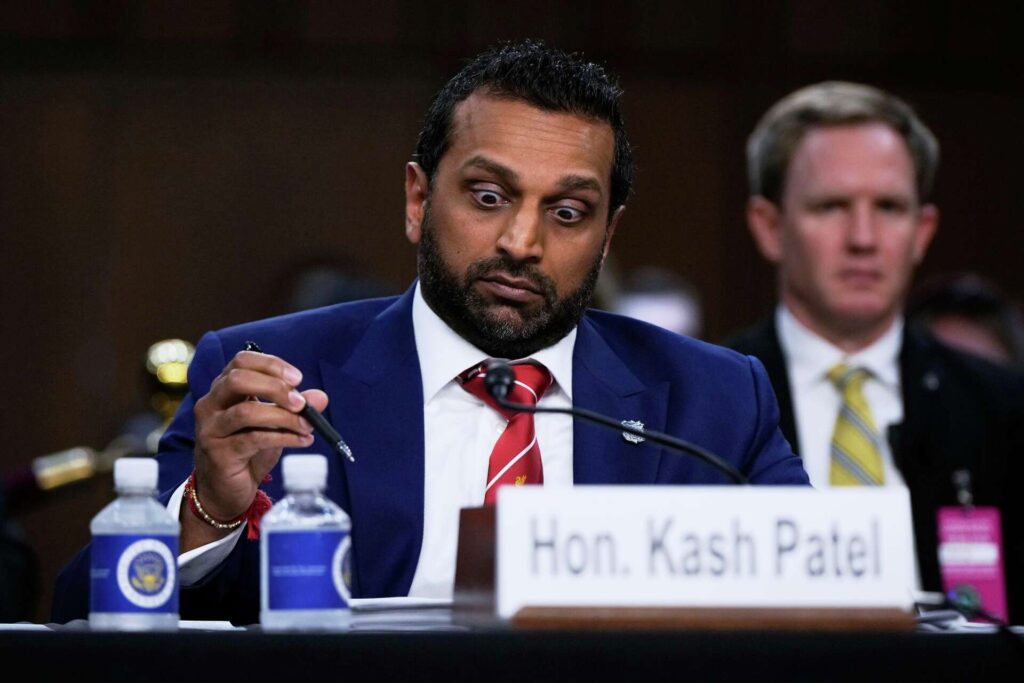1.President Trump’s UK State Visit: A Clash of Diplomacy and Dissent
What Happened:
State Visit: President Trump embarked on his second state visit to the United Kingdom.
Royal Reception: The visit included a state banquet at Windsor Castle and a meeting with King Charles III.
Protests: Thousands of protesters demonstrated in London and other locations. Police made several arrests following protest actions, including projecting images onto a Windsor Castle tower.
Why It Matters:
Diplomatic Significance: A state visit represents a significant diplomatic event.
Polarizing Figure: The juxtaposition of royal pageantry and widespread protests underscores the persistent international polarization surrounding Trump’s presidency.
Impact on US-UK Relations: This symbolic visit has potential implications for the optics of bilateral relations concerning trade, security cooperation, and public diplomacy.
Fueling Political Narratives: The visit contributes to domestic political narratives on both sides of the Atlantic.
Blog Angle Ideas:
Soft Power Dynamics: Explore the interplay between ceremonial diplomacy and public protest, analyzing what this visit reveals about soft power. (Focus: How protests impact the message of the state visit)
UK Perspective’s Influence: Examine the significance of British protests within the context of American politics. (Focus: How UK public opinion influences US political discourse)
Visual Documentation: Create a visual gallery and annotated timeline of the visit and protests, providing a comprehensive overview of the events. (Focus: Combining imagery and factual information for a compelling narrative)

2.Jimmy Kimmel Live! Pulled After Comments on Charlie Kirk
What Happened:
ABC and Disney pulled Jimmy Kimmel Live! from broadcast following intense backlash over host Jimmy Kimmel’s on-air remarks concerning the hypothetical killing of conservative activist Charlie Kirk. The program’s suspension stemmed from actions taken by major ABC affiliates who chose to stop airing the show, coupled with public criticism from regulators. This combined pressure ultimately forced ABC to take action.
Why It Matters:
This incident highlights the complex interplay between media responsibility, corporate risk management, and political pressure. Broadcasters face the constant challenge of balancing editorial freedom with the concerns of advertisers, affiliates, and regulatory bodies. This situation raises critical questions:
Network Response to Controversy: How should networks navigate high-profile controversies and balance competing interests?
Impact of Regulatory Threats: Could potential regulatory actions stifle free speech and commentary within the broadcast landscape?
Blog Angle Ideas:
Timeline and Breakdown:
What Kimmel Said: A detailed account of the specific remarks made by Jimmy Kimmel.
Immediate Fallout: The immediate reactions and consequences following the broadcast, including social media response and initial criticisms.
Key Actors Involved in Suspension: Identifying the individuals, groups, or organizations who actively pushed for the show’s suspension, including affiliates and regulators.
Legal and Regulatory View:
Potential FCC Involvement: Exploring the potential role of the Federal Communications Commission (FCC) and the implications for broadcast speech. Analyzing what actions the FCC could take (or is legally permitted to take) and the potential impact on future broadcasts.
Media Business Angle:
Influence of Affiliates and Advertisers: Examining the significant influence wielded by affiliates and advertisers on programming decisions. How do these financial relationships impact the content aired by networks, and what role did they play in the Jimmy Kimmel Live! situation? How might this incident affect future programming choices?

3.CDC Staff Departures Raise Concerns About U.S. Public Health Preparedness
Reports indicate a concerning trend of senior scientific and program staff leaving the Centers for Disease Control and Prevention (CDC). This exodus is attributed to leadership turnover and policy changes, raising alarms among experts about the potential impact on U.S. public health preparedness.
Key Concerns:
Weakened Public Health Infrastructure: The CDC plays a crucial role in disease surveillance, outbreak response, and vaccination programs. The loss of experienced personnel could significantly hamper these critical functions.
Slower Response Times: Institutional knowledge and established relationships are essential for effective emergency response. Departures and internal upheaval can slow down response times to outbreaks and other public health emergencies.
Damaged Relationships: Collaboration between the CDC and state and local health departments is vital. Staff turnover can strain these relationships, hindering coordinated efforts.
Erosion of Public Trust: Uncertainty and instability within the CDC can erode public confidence in health guidance and recommendations, impacting public health outcomes.
Potential Blog Angles:
Impact on Daily Operations: A deep dive into the specific roles of departing staff and the practical effects their absence has on everyday public health work. This could include examples of programs or initiatives affected by the loss of expertise.
Expert Perspectives: An interview-style piece featuring insights from public health experts on their primary concerns regarding the CDC staff departures. This could also explore potential recovery plans and strategies to rebuild capacity.
Data-Driven Analysis: An examination of historical data to demonstrate the correlation between staff turnover at the CDC and slowdowns or gaps in public health programs. This could provide compelling evidence of the long-term consequences of staff attrition.
The Core Issue:
The CDC’s ability to effectively protect public health is being threatened by the ongoing loss of experienced staff. This situation demands attention and action to mitigate the risks and ensure the agency can continue to fulfill its critical mission. The potential consequences of inaction are significant and could have long-lasting impacts on the nation’s health security.

4.FTC Investigates AI Companion Chatbots for Teens
What Happened:
The Federal Trade Commission (FTC) has launched an inquiry into AI-powered “companion” chatbots used by teenagers. The FTC issued orders to several companies operating these chatbots, demanding information on:
Testing Procedures: How are these AI systems tested?
Safety Measures: What safeguards are in place to protect teen users?
Harm Monitoring: How are potential risks and harms monitored and addressed?
The FTC’s investigation centers on three key areas:
Privacy: Data collection and usage practices.
Mental Health Risks: Potential psychological impacts of chatbot interaction.
Minor Protection: Adequacy of safeguards for underage users.
Why It Matters:
AI chatbots designed for teens present specific privacy and safety concerns. This FTC inquiry signals increased regulatory scrutiny of:
Product Design: How these chatbots are developed and designed.
Data Collection: How user data is collected, stored, and used.
Mental Health Impacts: The effects of prolonged interaction with conversational AI on teens’ mental well-being.
This investigation could lead to several significant outcomes:
Enforcement Actions: Penalties against companies found to be violating existing regulations.
New Consumer Protection Rules: Specific regulations targeting AI chatbots and teen users.
Industry-Wide Design Constraints: Changes in design practices across the entire chatbot industry.
Potential Blog Angles:
Explainer: A clear and concise explanation of how companion chatbots work and the specific risks they pose to teenagers.
Regulatory Timeline: A chronological overview of regulatory actions related to AI chatbots and what information companies must now provide to the FTC. This could include details of the FTC orders and deadlines for compliance.
Policy Analysis: An in-depth analysis of potential regulatory outcomes and how the chatbot industry is likely to respond. This could explore different regulatory scenarios and their potential impact on the development and deployment of AI chatbots.

5.FBI Director Kash Patel’s Senate Hearing: Key Takeaways and Implications
Kash Patel, the FBI Director, recently testified before the Senate Oversight and Judiciary Committees. He faced intense scrutiny from Democratic senators on several key issues.
Key Accusations & Areas of Concern:
Politicization of the FBI: Democrats raised concerns about potential political bias influencing the Bureau’s operations.
Mishandling of Sensitive Files: The handling of sensitive documents and information was a significant point of contention.
Partisan Priorities: Concerns were raised about the FBI potentially pursuing investigations based on partisan agendas rather than objective criteria.
Transparency Issues: The level of transparency within the FBI, particularly regarding high-profile investigations, was questioned.
Significance of Oversight Hearings:
These Senate oversight hearings are crucial for several reasons:
Public Understanding: They shape public perception of the FBI’s operations and effectiveness.
Legislative Impact: Hearings can directly influence legislation related to law enforcement and national security.
Budgetary Oversight: Congress’s budgetary control over the FBI is informed by these hearings.
Public Trust: The hearings play a vital role in maintaining (or eroding) public trust in law enforcement institutions.
Potential Consequences:
If the hearings reveal credible evidence of politicization or mismanagement within the FBI, several outcomes are possible:
Policy Reforms: Changes to FBI policies and procedures to address identified issues.
Investigative Constraints: Limitations placed on the FBI’s investigative powers to prevent future misconduct.
Further Congressional Action: Additional hearings, investigations, or legislative actions could be taken.
Blog Post Angle Ideas:
Hearing Highlights: A blog post focusing on the most important exchanges during the hearings and what they reveal about congressional oversight priorities. This post could analyze key statements, questions, and responses, highlighting areas of agreement and disagreement.
Accountability Deep Dive: An in-depth examination of how congressional oversight of the FBI functions. This post could explore the mechanisms of oversight, historical precedents, and potential changes to the oversight process that might result from these hearings.
Op-Ed: Rule of Law and Institutional Independence: An opinion piece discussing the broader implications of these hearings for the rule of law and the independence of law enforcement institutions. This piece could explore the balance between accountability and preserving the FBI’s ability to operate effectively.
